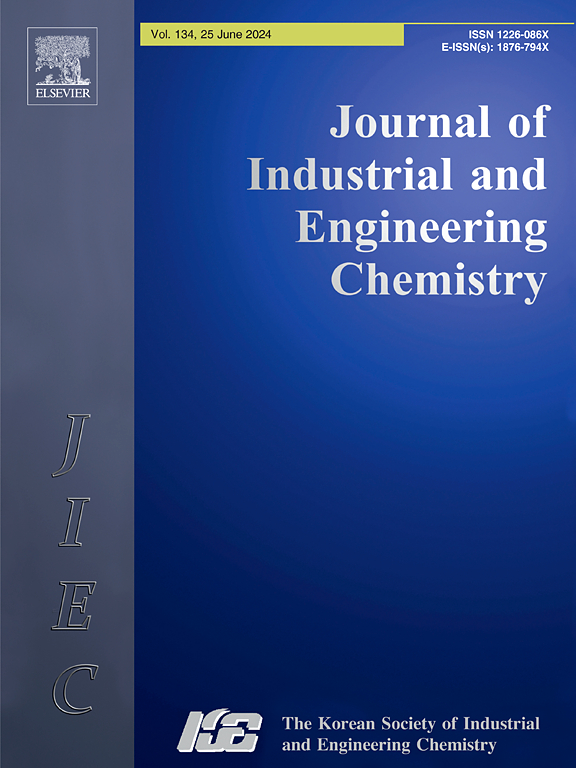Eco-friendly electrospun nanofibers for air filtration enhanced by TiO2 nanoparticles reactive phases for superior capturing the emitted polycyclic aromatic hydrocarbons (PAHs)
IF 5.9
3区 工程技术
Q1 CHEMISTRY, MULTIDISCIPLINARY
Journal of Industrial and Engineering Chemistry
Pub Date : 2025-01-25
DOI:10.1016/j.jiec.2024.09.055
引用次数: 0
Abstract
The electrospinning nanofibrous filters have attracted much attention owing to their distinctive physicochemical properties. This work focused on designing a novel, straightforward prototype model and fabricating eco-friendly electrospun nanofiber filters as promising air filtration. The synthesized electrospun nanofiber is composed of cellulose acetate (CA) and thermoplastic polyurethane (TPU), which was enhanced by TiO2 nanoparticles to improve the capturing of low, medium, and high molecular weight PAHs. The fabricated CA:TPU/TiO2 and their derivatives were analyzed using FT-IR, XRD, TEM, SEM, TGA, and mechanical characteristics. Different concentrations of TiO2 (2 %, 4 %, 6 %, 8 %) were evaluated. The determinations of PAHs were achieved using gas chromatography-mass spectrometry (GC–MS) with a TG-5MS column. The newly designed prototype has two air pathways with identical specifications; therefore, it could simultaneously evaluate the efficiency of two filters. In Motobas dumpsite (agricultural sources), the results indicated that the highest efficiency of electrospun nanofiber filters was CA:TPU/TiO2 6 %, captured 3041 µg/m3 of total PAHs, and also in the incinerator stack (industrial sources) was CA:TPU/TiO2 6 % captured 9401 µg/m3 of total PAHs. The concentrations of low molecular weight PAHs were greater than the high molecular weight in all sites, and the electrospun CA:TPU/TiO2 was the most effective catalyst for air purification.

求助全文
约1分钟内获得全文
求助全文
来源期刊
CiteScore
10.40
自引率
6.60%
发文量
639
审稿时长
29 days
期刊介绍:
Journal of Industrial and Engineering Chemistry is published monthly in English by the Korean Society of Industrial and Engineering Chemistry. JIEC brings together multidisciplinary interests in one journal and is to disseminate information on all aspects of research and development in industrial and engineering chemistry. Contributions in the form of research articles, short communications, notes and reviews are considered for publication. The editors welcome original contributions that have not been and are not to be published elsewhere. Instruction to authors and a manuscript submissions form are printed at the end of each issue. Bulk reprints of individual articles can be ordered. This publication is partially supported by Korea Research Foundation and the Korean Federation of Science and Technology Societies.

 求助内容:
求助内容: 应助结果提醒方式:
应助结果提醒方式:


